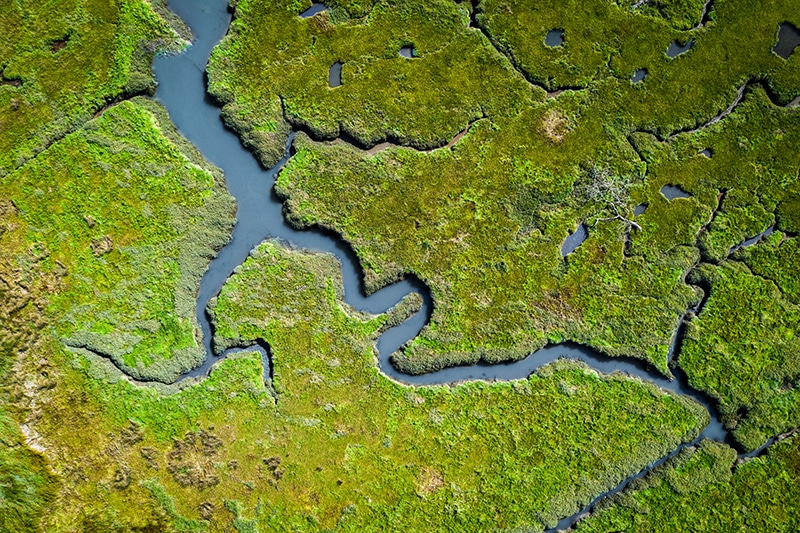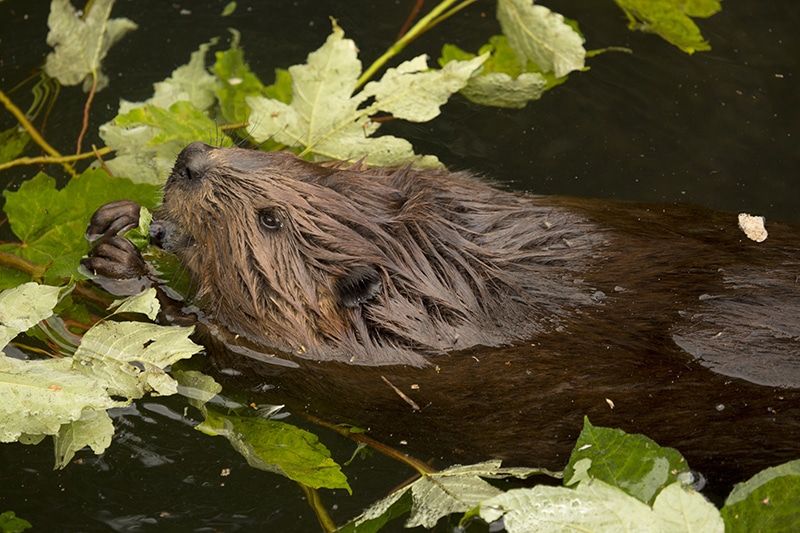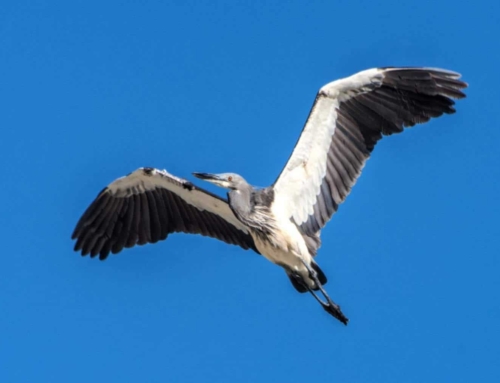The state of biodiversity has been in the news again these past few weeks, with high-profile reports like the Global Biodiversity Outlook 5 (by the United Nations Convention on Biological Diversity) and Living Planet Report 2020 (by the Zoological Society of London and World Wildlife Fund) generating depressing headlines. Among Earth’s fragile natural systems, freshwater ecosystems consistently emerge as some of the most threatened.
And yet, the ability for freshwater ecosystems and species to recover when remedial action is taken is incredibly exciting. Synchronicity Earth has been supporting freshwater conservation almost since its inception, and has witnessed extraordinary organisations making unprecedented successes. Conservation works, we just need more of it, and if we can scale up our efforts to protect freshwater for all the species dependent on it, including ourselves, these trends can be reversed.
Some of the figures on freshwater make for grim reading: 90 per cent of global wetlands have been lost since 1700, and they are being destroyed three times faster than our rainforests. The average abundance of 3,741 freshwater populations, representing 944 species, monitored across the globe declined by 84 per cent on average between 1970 and 2016. Only 37 per cent of rivers longer than 1,000 kilometres remain free-flowing over their entire length and 23 per cent flow uninterrupted to the ocean.
However, hard as these figures are to accept, they provide us with essential evidence to highlight the significant investment required to address such problems. This is one of the reasons why a key strand of our Freshwater Programme is advancing knowledge on freshwater species and ecosystems.

The Living Planet Report says that, based on available data, almost 90 per cent of global wetlands have been lost since 1700. Image © Shutterstock
Thanks to the decades of research showcased in these recent reports, we have some understanding of the highest priority regions and species, as well as the threats driving the declines, which are essential to direct conservation efforts. For example, the biggest declines in freshwater species are seen in amphibians, reptiles, and fishes.
All this research has been culminated in a six-point Emergency Recovery Plan by a global team of scientists from WWF, International Union for Conservation of Nature (IUCN), Conservation International, Cardiff University and other eminent organisations and academic institutions. Each priority action in the plan has already been implemented successfully in one or more situations across the globe, providing proof of concept and lessons that can inform scaling-up of actions.

Six priority global actions to bend the curve of freshwater biodiversity loss that should be reflected in the post2020 biodiversity framework. Image: Living Planet Report 2020 Deep Dive into Freshwater, ZSL and WWF.
Large-scale national and international successes are entirely possible
Although we have created artificial borders to divide the Earth into countries, seas and oceans with invisible borders marked on maps, our waterways do not obey them. Therefore, one of the greatest challenges facing freshwater conservation is to implement large-scale action at a national and international level.
There have already been examples of this being achieved under the various steps of the Emergency Recovery Plan:
- Allow rivers to flow more naturally
According to Dam Removal Europe, almost 5,000 dams have already been removed across the continent and, according to American Rivers, more than 1,500 in the United States.
- Reducing pollution
The European Union Urban Waste Water Treatment Directive has led to widespread reduction in sewage pollution.
- Protecting critical wetland habitats
Approximately 60,000 hectares of floodplain wetlands have been restored along the lower Danube River as a result of an international agreement signed by ministers from Bulgaria, Romania, Moldova, and Ukraine.
- Ending overfishing and unsustainable aggregate (sand, gravel, crushed rock) mining
Some of the examples by countries successfully tackling freshwater exploitation issues are Malawi’s Ecosystem Approach to Fisheries Management, community fisheries management within the Juruá River’s oxbow lakes in the Brazilian Amazon, reduction of platypus bycatch in Australia with adapted fishing equipment, aggregate waste recycling systems in Germany and India and improved regulation of riverine aggregate extraction in the UK.
- Controlling invasive species
Prevention of non-native carp species invasions in the Great Lakes of the United States and Canada has successfully used a combination of scientific risk assessments, prohibition of live fish transport, and an electrical barrier.
- Safeguarding and restoring connectivity
A strategic environmental assessment for hydropower planning has been undertaken in Myanmar that has recommended keeping the main stems of the Irrawaddy and Salween rivers free flowing.
Megafauna: the flagships of freshwater

The Eurasian beaver represents an incredible conservation success story, recovering from 1,200 known wild individuals in the 12th century to more than a million Eurasian beavers in the wild today. Image © Shutterstock
“The bigger the size, the bigger the threats,” says the Living Planet Report, regarding freshwater ‘megafauna’. Freshwater megafauna are species that grow to more than 30 kg, such as sturgeon and Mekong giant catfish, river dolphins, otters, beavers and hippos, and they seem to be particularly at risk due to changes in their environment. Recovery can also take longer, as they often reproduce at a later stage in life and have fewer offspring.
However, as we explored in this blog about freshwater ‘pandas’, these megafauna are often the most charismatic creatures of the rivers, and they can inspire widespread action and awareness for the rest of their ecosystem. One example of an international effort to save a freshwater megafauna species is the reintroduction of the Eurasian beaver, which was hunted to the point of near extinction. By the 12th century, only about 1,200 Eurasian beavers remained in their range from Western Europe to the Chinese-Mongolian border. However, thanks to international reintroduction efforts, there are now more than a million Eurasian beavers in the wild.
Another heartening comeback story is that of the Indus river dolphin, one of only four freshwater dolphin species left on Earth. Indus river dolphin was once widespread but is now only found in the Indus River in Pakistan and one of its tributaries – the River Beas in Pujab, India. Widespread construction of dams for irrigation, have led to dangerously low water levels and a constricted and fragmented range meaning populations are isolated from one another. The dolphins are thought to have disappeared in ten of the possible 17 river sections they previously inhabited. The dolphin population has also been thought to be affected by water pollution from agricultural and industrial waste, and by 1972 there were only 132 known individuals in Pakistan. However, a rigorous government conservation programme has educated local communities and resulted in the rescue of stranded dolphins. There are now 1,987 Indus dolphins in Pakistan.
Some of the projects in Synchronicity Earth’s Freshwater Programme include the conservation of flagship megafauna species, helping to champion freshwater conservation and engage people in the cause. In the Philippines, the Mabuwaya Foundation have inspired their local community to celebrate and protect the Critically Endangered Philippine crocodile, which has been instrumental to their conservation efforts for the crocodile, other freshwater species and habitats. One of Shoal’s key projects is Project Mahseer, focused on the conservation of the Critically Endangered hump-backed mahseer (often referred to as ‘the tiger of the water’, with body sizes reaching more than 54 kg) as a flagship species for the conservation of some of Asia’s most biodiverse yet threatened river systems.

Enguri hydropower dam on the Inguri River in Georgia, USA. Image © Shutterstock
Dams present one of the biggest threats to freshwater ecosystems and the people whose livelihoods depend on them: preventing species migration; trapping sediment which protects riverbanks; restricting water flow, releasing methane and CO2 from reservoirs; and causing floods which displace people and wildlife, among many other issues.
One particularly vulnerable group is freshwater ‘megafauna’ (species that grow to more than 30 kg), many of which are migratory and depend on free-flowing rivers. One study showed that 191 of 207 freshwater megafauna species studied were threatened by existing and planned hydropower dams. Last year, an exciting international initiative was born to tackle this urgent problem facing migratory freshwater species, inspired by the successful concept of flyways, which has been used to help protect migratory birds for the last eighty years: Global Swimways. This project aims to classify and map the world’s freshwater fishes according to their migration patterns and develop a tool allowing policy makers and river managers to assess the impact of current and future infrastructure development on migratory freshwater fishes.
The potential for recovery

When a dam is removed, the river’s natural water flow is restored, enabling migratory species to travel across their range once more. Image © Shutterstock
As many of the stories above have shown, action for freshwater conservation can result in remarkable recoveries. The Living Planet Index for Migratory Freshwater Fish reported that populations of migratory freshwater fish affected by conservation interventions, such as regulation of fisheries, declined less than those without.
In Synchronicity Earth’s many years of working with organisations focused on freshwater issues, we have come across many inspirational stories and examples of how successful freshwater conservation can be. For example, conservation of the Philippine crocodile has seen its numbers recover from 12 known individuals in the wild in 2001 to around 250 today, and a huge shift in public perception of this Critically Endangered species. Fish Conservation Zones in north-eastern Thailand have seen increases in local fish populations and the appearance of species previously not recorded in the area. There are many proven methods of freshwater conservation that have been effective in helping ecosystems and species recover, they just need to be scaled up to bend the curve of freshwater decline.





